Images of dry tropical habitat: Argentina
All of these photographs were
taken in extreme northern Argentina in an area broadly known as the Chaco.
Click on a thumbnail for a larger image:
Plants
1.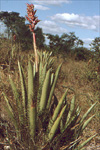 2.
2.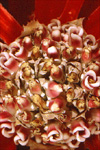 3.
3.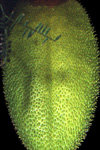 4.
4.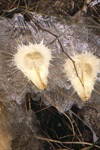 5.
5.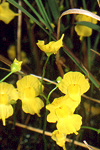 6.
6. 7.
7.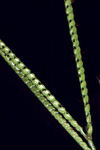 8.
8.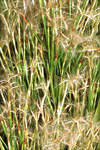 9.
9.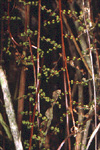 10.
10.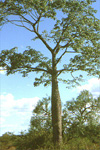 11.
11.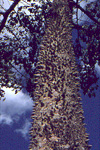 12.
12.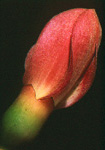 13.
13.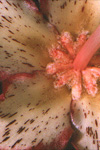 14.
14.
- 1. Large terrestrial bromeliad
(Bromeliaceae) Aechmaea distacantha . Like many bromeliads,
A. distacantha catches water in a cup formed by its leaves. The water
in the cup is used by the plant but is also a valuable resource to many
small animals.
2. Inflorescence of another large terrestrial bromeliad in the genus
Bromelia. The leaves of the rosette that are closest to the inflorescence
are red in this photograph. Many bromeliads produce red or other colored
leaves or bracts when they flower.
- 3. Pimply seed pod of the
liana Pithecoctenium in the Bignoniaceae.
- 4. The seeds of Pithecoctenium
are fringed with a diaphanous wing.
- 5. Bright yellow flowers
of the carnivorous plant Utricularia (Lentibulariaceae) growing
in a seasonally moist area.
- 6. - 8. As in many
parts of the world, grasses are important components of Chaco vegetation.
Common members include: 7. Chloris sp.; 8. Paspalum sp.;
9. Schizachyrium microstachys
- 9. Ferns in the genus
Pellaea (?) are commonly found in dry areas.
- 10. - 14. Silk
Floss Trees (Chorisia spp.in the Bombacaceae) are some of the
most conspicuous members of Chaco vegetation. Some of them are massive
bottle trees and all of them have large, colorful flowers. 11. and 12.
show the habit and spiky trunk of C. speciosa , while 13. and 14.
show the bud and flower. 15. is a flower of C. insignis in the
process of opening.
-
-
-
Animals
1.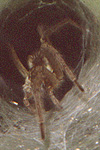 2.
2. 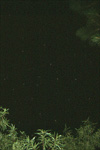 3.
3.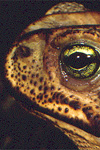 4.
4.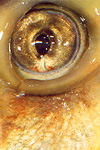
- 1. Spider
in web in the center of an A. distacantha cup.
- 2. This
is one of the weirdest things I've ever seen. It's a giant spider web
spun cooperatively by 30 or so colonial spiders. There are a few big strands
that are thick enough to trip over that anchor the web. These strands
remain in place all the time. In the evening, the spiders come out and
get to work spinning a series of smaller webs anchored by the big strands.
It' s almost creepy to see them working quickly and silently, but perfectly
coordinated, even optimizing the web to suit whatever prey animal might
be most abundant that night. In the morning, they take the whole thing
down again.
- 3.
Head of the large toad Bufo marinus.
- 4.
Eye and face of a pacú fish.
home - people -
research - images of the dry
tropics - exploration
- acknowledgements
Instituto de Biología, Universidad Nacional Autónoma
de México
Circuito Exterior s/n, Ciudad Universitaria
Copilco, Coyoacán A. P. 70-367
C. P. 04510, México, D. F.
MÉXICO
(52) 55 5622-9127 fon (52) 55 5555-1760 fax
molson@ibiologia.unam.mx
all material © 2002 Mark E Olson
 2.
2. 3.
3. 4.
4. 5.
5. 6.
6. 7.
7. 8.
8. 9.
9. 10.
10. 11.
11. 12.
12. 13.
13. 14.
14.
 2.
2. 3.
3. 4.
4. 5.
5. 6.
6. 7.
7. 8.
8. 9.
9. 10.
10. 11.
11. 12.
12. 13.
13. 14.
14.